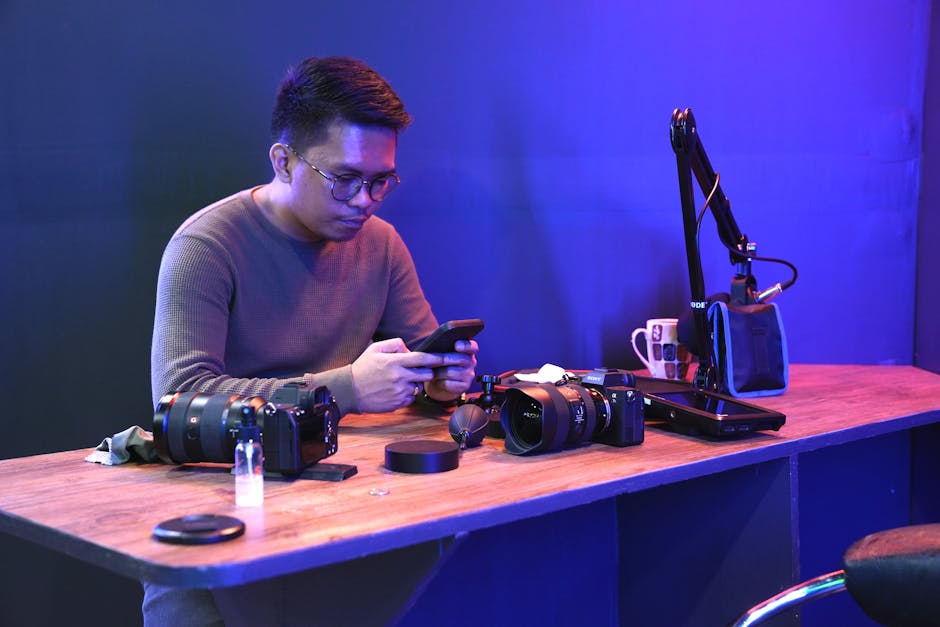You’re sitting at your desk, deep in work on your big monitor. Your phone buzzes on the table. You glance over, see the notification, and then have to pick up the device, type with your thumbs, and break your entire workflow. The green bubble text that just came in, it feels a little… off. But the blue bubble group chat is where the real action is. It’s a modern problem that feels like it should have been solved years ago. Getting your iMessages on desktop should be easy, right? Well, in 2025, the answer is still a messy “kind of, depending on your computer.” The whole thing is a story about walled gardens and the clever people trying to climb them.
The Mac Experience: How imessage on Desktop is Supposed to Work
For people using a Mac, this is a non-issue. It is the gold standard that Apple wants everyone to see. The whole setup is just incredibly smooth.
It’s all built around the Messages app that comes with every Mac. You just sign in with the same Apple ID as your iPhone. That’s normally all you have to do.
From there, it’s all connected. A text message sent to your phone number appears on your computer screen instantly. Your entire chat history is there.
You can send texts, photos, videos, and even those silly Animoji things right from your keyboard. The convenience is something that is hard to overstate.
It’s part of Apple’s ‘Continuity’ feature. The idea is that you can start a conversation on one device and pick it up on another without a second thought. And it works. It really does.
This is the dream. It’s how messaging in 2025 should feel. But this dream is intentionally kept inside Apple’s own world, which is a big deal.
The Big Question: Getting iMessages on a Windows PC in 2025
Okay, so what about the rest of us? The people with custom-built gaming rigs or standard-issue work laptops that run Windows. This is where it gets complicated.
Apple has zero financial reason to make an iMessage app for Windows. Keeping iMessage exclusive to Apple hardware sells more iPhones and Macs. It’s a powerful lock-in tool.
So, users have been forced to find workarounds for years. These solutions have always been a bit shaky, sometimes they work great and sometimes they break. For a while it seemed like things were getting better.
The situation in 2025 is a mix of third-party cleverness and half-measures from Microsoft itself. There is no one perfect answer, it is all about choosing your compromise.
Third-Party Apps: The Wild West of Blue Bubbles
This is where the real action is for getting iMessage on a PC. Companies have tried to bridge the gap that Apple created. The most famous one right now is probably Beeper.
Beeper, and apps like it, basically try to trick iMessage. They often work by using a Mac computer in the cloud as a middleman, or by figuring out Apple’s messaging system. Your messages go from your PC to their server, then to iMessage, and back again.
Sunbird was another name in this space, trying to do a similar thing. The goal for all of them is to give you a unified inbox, with iMessage being the star attraction.
Here’s a breakdown of using these kinds of tools:
The Good Part: When they work, they actually work! You get your blue bubbles, your group chats, and your pictures on your Windows machine. It feels like magic.
The Not-So-Good Part: Security is a real question. You are often giving your Apple ID login to another company. You have to trust them with your private messages.
The Annoying Part: Apple is constantly trying to shut these services down. An update to iOS can break the connection overnight, leaving you back at square one. It’s a cat-and-mouse game.
So using one of these is a gamble. It might be the best way to get iMessage on Windows today but it could stop working tomorrow.
The ‘Phone Link’ Situation for Windows
Microsoft has its own tool called Phone Link. It connects your phone (Android or iPhone) to your Windows 11 PC. For a while, this was seen as a possible official fix.
They added a basic version of iMessage support through it. This feels like a huge step forward, but the way it is set up has some big limits.
It works over Bluetooth. Your PC is basically just acting like a remote for your iPhone. It’s not a true iMessage client on your desktop.
This means a few things:
Your iPhone needs to be nearby and connected.
You won’t see your past conversation history.
Group chats with iMessage don’t really work.
Sending pictures or videos is not possible.
It’s better than nothing, for sure. You can reply to a quick message without picking up your phone. But it’s not the full iMessage on desktop experience people want.
So, What’s Apple’s Next Move? RCS and the Future
For years, the world has been asking Apple to fix the “green bubble” problem. After a lot of pressure, Apple finally agreed to support RCS, which is a newer messaging standard.
RCS is like an upgrade for regular SMS. It lets Android users have better features when they text each other, like read receipts and typing indicators. When they text iPhone users, it will also be better.
This move is important. It makes the basic texting experience between iPhones and Androids less terrible. The green bubbles won’t look as old-fashioned.
But what does this mean for iMessage on desktop? It probably means Apple feels even less pressure to bring iMessage to Windows.
By adopting RCS, they’ve quieted some of the loudest complaints about messaging. But they get to keep their best feature, iMessage, exclusive to their own stuff. It’s a clever business move.
Is It Even Worth the Hassle for PC Users?
Let’s be real for a second. The methods for getting iMessage on a PC are a pain. They can be unstable or have security questions. So you have to ask yourself, is it worth it?
For some people, absolutely. If your entire family and all your friends are in iMessage group chats, being left out is a real social problem. Getting those blue bubbles on your PC is a game-changer.
But for many others, it might be time to look at other options. Apps like WhatsApp, Signal, and Telegram all have fantastic desktop clients for both Mac and Windows.
They work perfectly, sync your chat history, and let you send all kinds of media. They do everything people want from iMessage on desktop, they just aren’t iMessage.
Convincing your friends to switch messaging apps is its own mountain to climb. But it’s an option that avoids the technical mess and constant uncertainty of the iMessage workarounds.
Ultimately, the choice is yours. You can dive into the world of third-party apps, use the very limited Phone Link feature, or just use a different messaging service on your desktop. In 2025, there is still no simple answer.
Frequently Asked Questions About iMessages on Desktop
1. What is the safest way to get iMessage on a PC in 2025?
There is no 100% Apple-approved, super safe way. The most “official” method is Microsoft’s Phone Link, but it’s very limited. Using third-party apps like Beeper requires you to trust that company with your Apple ID and message data, which has some risk.
2. Will Apple ever release an official iMessage app for Windows?
It is extremely unlikely. iMessage is a key reason why people buy iPhones and Macs. Giving that feature away for free on Windows would hurt their hardware sales, so there’s no business reason for them to do it.
3. Does the Windows Phone Link app give me my full iMessage history?
No, it does not. Because it connects over Bluetooth and just mirrors new messages, it cannot see or sync your past conversations. It only shows texts that come in while your phone is connected.
4. What is RCS and how does it change iMessage?
RCS is a new texting protocol that replaces old SMS. It will make texting between iPhones and Androids better, adding features like read receipts and better media sharing. It does not change iMessage itself; iMessage-to-iMessage chats will stay the same. It just improves the experience when an iPhone user texts an Android user.
5. Are third-party iMessage apps legal to use?
They operate in a legal gray area. While using them probably won’t get you in trouble, they may violate Apple’s terms of service. The bigger risk isn’t legal, but that Apple could shut the service down at any moment or that your account could be temporarily locked.
Key Takeaways
For Mac users, getting iMessages on desktop is simple and built-in through the native Messages app.
For Windows users, there is no official, fully-featured iMessage application from Apple.
Third-party services like Beeper are the most complete solution, but they come with potential security risks and can be unreliable due to Apple’s actions.
Microsoft’s Phone Link offers very basic iMessage support, but it lacks history, group chat support, and media sharing.
Apple’s adoption of RCS improves texting with Android users but does not solve the iMessage-on-PC problem. It likely makes Apple less inclined to ever release a Windows app.
Users should weigh the hassle and risks against using alternative cross-platform messaging apps like WhatsApp or Signal that have excellent desktop support.



